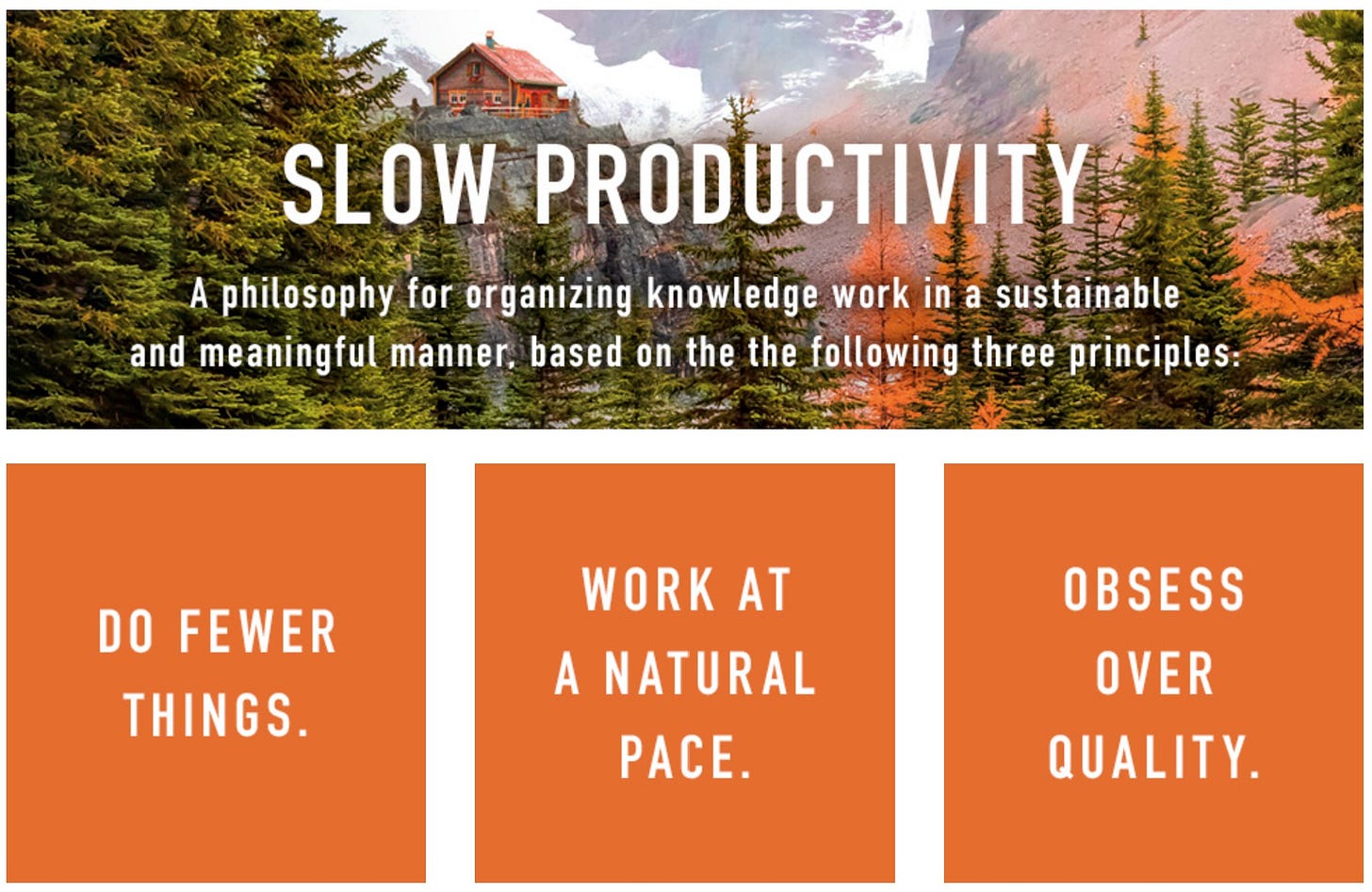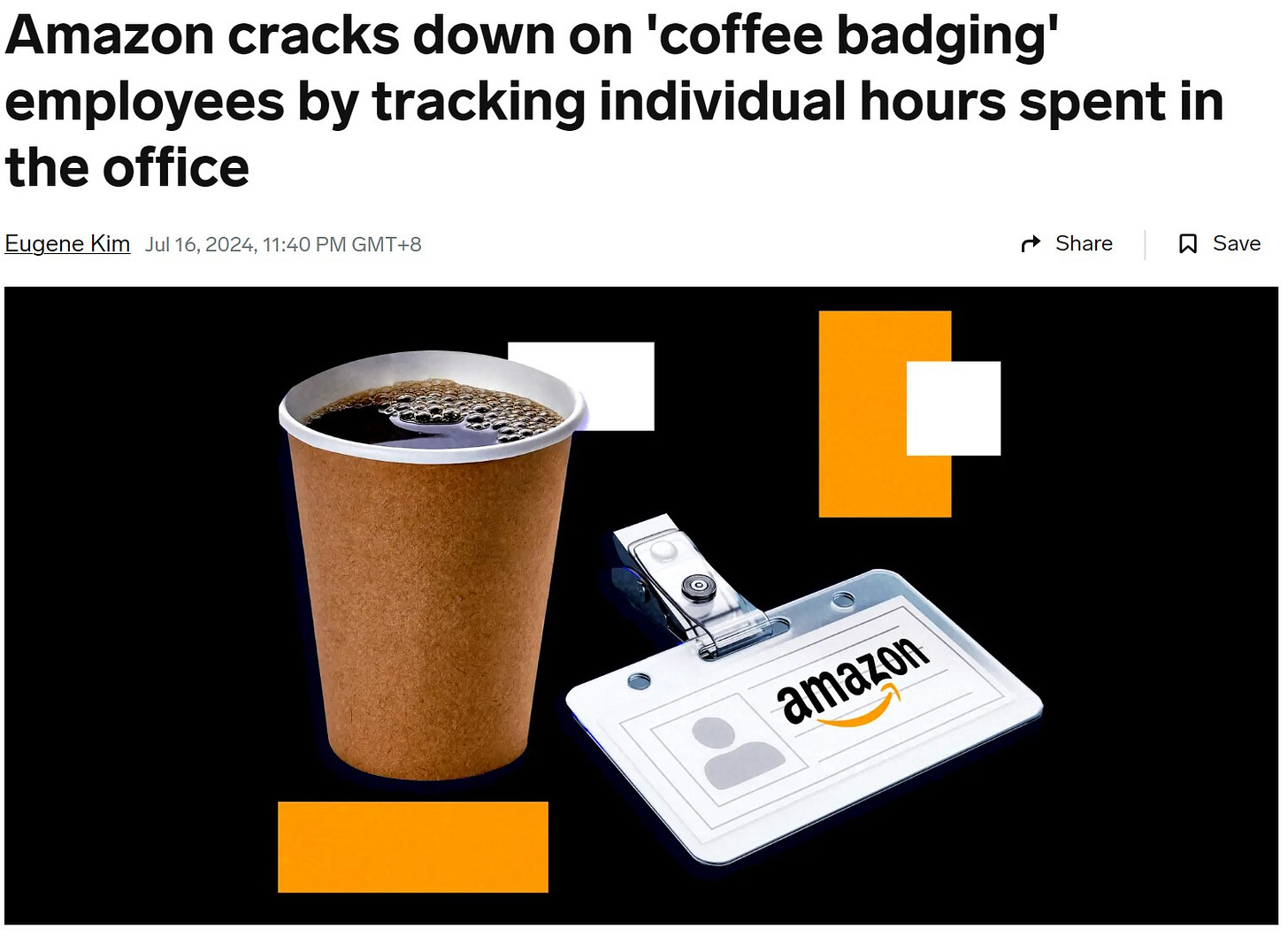
Welcome to July's issue of Talking Dough!
It's my first month back at work after being on a mini-retirement for the last 6 months, so I wanted to talk about productivity.
During my break, Cal Newport released his new book Slow Productivity, which I thought would be the perfect book to ease me back into corporate life.
There were 2 portions in the book which really spoke to me, which I wanted to share with you.
1) The issue with pseudo productivity
2) Switching to a pull-based workflow
Pseudo productivity - defined as using visible activity as a crude proxy for actual productivity - is one of my big annoyances at work.
Just 2 weeks ago Business Insider reported that Amazon is going to track how long employees spend in the office, down to the hour.
The idea is that if management can see staff in the office, and that they're attending meetings and clacking away at their keyboards, then at least they're doing something.
The more something the employee is doing, the more productive they are.
Which is of course complete bs!
Cal Newport himself called out soccer club Manchester United for engaging in pseudo productivity - using a 20% drop in email volume on Fridays as justification to get employees back in the office. (as if anyone else needed more evidence to prove said club is a joke lol).
Because I’ve been obsessed with productivity since my college days, I don’t take as long to complete my tasks compared to other people.
However, I still end up wasting time in the office because managers still look at pseudo productivity to evaluate their little worker bees - which is a sad fact of life.
Shade at busywork aside, one of the key themes of the book is to do fewer things, and one way of doing that is switching from a push-based workflow to a pull-based workflow.
Let’s start by understanding the differences between the two.
For most people, the norm is to have a push-based workflow. This is when colleagues, managers and anyone else can "push" work to you in the form of an email, Slack/Teams message, call or whatever.
As a result, projects and tasks are constantly piled on, quickly resulting in overwhelm.
In a pull-based workflow, you determine how many active projects or tasks you want to manage at a time, and only “pull” new projects from a master list when you have the space (he calls this a "holding tank")
I know that sounds abstract, so here's how it would work in practice:
Create a list of all your projects - this is a master list of everything you’re committed to.
Divide this list into “active projects” vs “holding tank” - pick a small number of projects to focus on (he recommends three), everything else goes into the holding tank.
Focus on the active projects - schedule your time and energy solely into completing these projects
Pull the next project - when one of the active projects is completed, pull a replacement from your holding tank.
If you want to watch Cal Newport talk about this system in his own words, you can watch his video here:
I know many people are rolling their eyes right now thinking "that's great, but that's not going to work for me".
And of course, there are certain fields where this isn't going to apply. I don't think nurses can limited themselves to 15 patients a day, for example. Or law enforcement only investigating 10 crimes a day.
However - I think the key is not to look at all the ways that something like a pull-based workflow can't work, but to find elements where it can work, and tweak that for your own life.
For example, I personally can't implement something like this at my day job as I have very little control over my workload. However, I do have full control over my personal projects, and I've found this workflow to be tremendously helpful.
At the beginning of the quarter, I write down somewhere between 10 and 12 projects that I'd like to work on. Each month, I then pull 3-4 projects that I think I can realistically make progress on.
The biggest surprise for me has been the benefits of focusing on a small project list.
I used to work on 10 or 12 things at a time, and paring that down to 3 or 4 really lets me focus on completing them and then moving on to the next project.
When things do get hectic, I also feel better knowing that I’m just re-negotiating 3 projects and deadlines with myself, instead of 10.
Just like with your finances, having the right productivity system is critical if you want to succeed.
I know I shave hours of work off my day job just thanks to my system - I can then use those extra hours to create content for this page or just relax.
You might be skeptical (just as I was, honestly), but why not give it a try! If it doesn’t work, you can always switch back to your old system, but I think the change will be worth it.
If you'd like to read the book and support the page while you're at it, here's the affiliate link on Amazon.
It doesn't cost you anything but Amazon sends a something like 40 cents my way.
Thank you and see you next month! I’ll be examining the idea of “1,000 True Fans”, and whether it’s still relevant in 2024 (no, not those kind of fans!).


